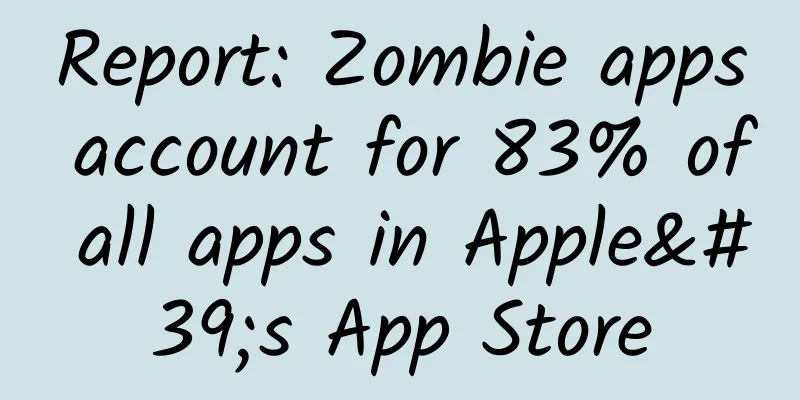The commercial value of OTT is underestimated. It is not impossible for it to take over the mobile Internet.

|
After decades of development, China's Internet has become the world's second largest Internet market, with 710 million Internet users creating numerous market opportunities. After the PC Internet, mobile Internet began to weaken in 2016 after experiencing crazy growth, and the era of demographic dividend has quietly ended. After PC and mobile, who will be the third successor? Some people think that However, affected by profitability and monetization models, the commercial value of OTT has always been underestimated by the industry. So how can we accurately grasp the pulse of the OTT market in the era of big data? The OTT market is approaching a critical point Since 2013, the smart TV industry has continued to heat up, but as OTT has developed to this day, every practitioner has a common confusion, including terminal manufacturers, CPs, and the seven major licensees: why are they all still losing money? Why has the "OTT" market explosion that the industry has been calling for not yet arrived? According to the "2016 Big Screen Ecosystem Operation Big Data Blue Book" released by Aowei Cloud Network and China Electronic Information Industry Federation, as the core of home Internet devices, the number of OTT terminals (including smart TVs and boxes) reached 165 million in 2015. It is expected that by 2020, the number of OTT terminals will exceed 400 million, and more than 70% of Chinese households use OTT terminals to watch programs. What does this development speed mean? We can compare it to the development law of mobile Internet. In 2013, the coverage rate of China's mobile smart terminals was 43%, which led to the explosion of the mobile Internet market. The development curve of the OTT market is surprisingly similar to that of the mobile Internet market. According to the Blue Book, four years later, in 2017, the household coverage rate of OTT is expected to reach 45%, and it is very likely to take over the baton of mobile Internet and create a new round of Internet myths. It is estimated that by 2020, the market size of OTT will reach 630 billion yuan. Scale creates traffic, and traffic creates value. Li Ye, general manager of the Family Internet Big Data Division of Aowei Cloud Network, believes that "the entire TV ecosystem is an ecosystem with entertainment as its core, which includes music, video, games and reading. On the basis of entertainment development, since TV is a fixed large screen in the family, it includes the entire range of family life services, such as shopping, education, finance, medical care, security, and community services, which will construct the second consumer ecological stage of the entire large-screen ecosystem. The above will give birth to a business ecosystem, including advertising monetization and content monetization; the third is service monetization, including e-commerce shopping, online education, etc., and the last is data monetization." As the integrated and open business model is gradually upgraded and innovation in advertising, content, apps, games, platforms and other aspects is accelerated, smart TVs are about to demonstrate diversified profit models and incomparable commercial value. Enhance the influence of OTT and create new value for large-screen marketing So how can we work with more companies to tap into the commercial value of large screens in the face of the upcoming OTT market? In 2015, the scale of the traditional TV advertising market alone exceeded 100 billion yuan, while the OTT market size was less than one twentieth of that. The difference in marketing value between the two large-screen TVs is so huge that it is worth thinking deeply. Enhancing the influence of OTT and expanding its marketing value to brands has become the common goal and responsibility of the industry. Duan Youqiao, senior vice president of iQiyi, believes that "only by increasing the ARPU value of advertising and satisfying more advertisers can TVs sell better and video costs can be truly reduced. Video companies, licensees and TV manufacturers as CPs can truly make profits on OTT." The rise of Internet TV just meets advertisers' demands for visible and controllable TV advertising and timely information feedback. The cross-screen interactive gameplay can also be well integrated with the living habits of the younger generation of consumers. However, Internet TV digital marketing driven by big data has not attracted the attention of many advertisers. Han Yibing, vice president of Youpengpule, revealed, "So far, I don't think the future is bright, but very difficult. To this day, we are still working with some advertisers, including large 4A companies, to start from the first, second and third. How can advertisers develop when their budgets have not yet included OTT or interactive TV as a separate category to choose from? Now they are still allocating money from digital media budgets or from PC TV. I think this requires the joint efforts of the entire industry." He said that Youpengpule is willing to work hand in hand with its partners to do practical things and must make this happen, which is extremely important for the future development of Internet TV. Overall, the OTT Internet market has already begun to form a traffic foundation, and it is constantly growing as the terminal scale expands. The dual characteristics of "traditional live broadcast + online on-demand" on the OTT side not only enhance the user experience of TV audiences, but also can obtain user portrait characteristics and usage preferences in real time. In the future, OTT marketing will no longer just be about selling traffic and advertising, but will be able to accurately target specific audiences, combine products and services with content that audiences like, and directly guide marketing and generate sales results. OTT will evolve into a huge content and product service platform, becoming an important bridge for brands to communicate with households and provide business services. Eventually become a powerful successor to the mobile Internet. As a winner of Toutiao's Qingyun Plan and Baijiahao's Bai+ Plan, the 2019 Baidu Digital Author of the Year, the Baijiahao's Most Popular Author in the Technology Field, the 2019 Sogou Technology and Culture Author, and the 2021 Baijiahao Quarterly Influential Creator, he has won many awards, including the 2013 Sohu Best Industry Media Person, the 2015 China New Media Entrepreneurship Competition Beijing Third Place, the 2015 Guangmang Experience Award, the 2015 China New Media Entrepreneurship Competition Finals Third Place, and the 2018 Baidu Dynamic Annual Powerful Celebrity. |
<<: Looking at the decline of Japan's television industry, can China become the next South Korea?
>>: Can Didi maintain its original intention in the post-unicorn era?
Recommend
Why is there a fine for adding acesulfame potassium, a common beverage, into orange juice?
Recently, another piece of news related to food a...
Today is the day when black technology is booming
[[164892]] It's April Fools' Day again Te...
Fuel cells have promising development prospects, but hydrogen storage remains the biggest obstacle
Since 2017, the fuel cell industry has begun to d...
Inventory of plants that are mispronounced | Tamarix and Polygonum multiflorum: The names are too weird, and if you recognize half of them, you are bound to be mispronounced
Many names of trees follow the rules of phono-sem...
What do the blue, yellow, orange and red rainstorm warning signals mean?
I guess you must have received a text message lik...
Affiliate Marketing Methodology
Not long ago, a friend of mine who works in the c...
Dapeng M2: All-in-one is the future of VR
Oculus founder Palmer Luckey once made it clear t...
Youku video advertising account opening process and billing details
Youku is an advertising platform with many differ...
How long does it take for website SEO optimization to take effect? What to do if website SEO optimization is slow?
How long does it take for website SEO optimizatio...
Apple iOS 15.2 RC preview version new feature: can check whether the iPhone repair parts are genuine
[[439359]] On December 8, in the iOS 15.2 RC prev...
The latest news about the 2022 Zhurong: When will it land on Mars? Why is there no movement?
Zhurong is the Mars rover for the Tianwen-1 missio...
How to analyze live streaming traffic!
There are two topics today. The first one is &quo...
In order to cope with the cruel nature, "non-Buddhist frogs" choose such a strange lifestyle
Lying-flat youth, Buddhist youth, and emo youth a...
Let’s talk about how to place advertisements?
Baidu has been overhauling its business promotion...
Will your brain become swollen if you watch short videos frequently? The impact on your body and mind may be far beyond your imagination
I won't even watch a two-hour movie. A short ...









